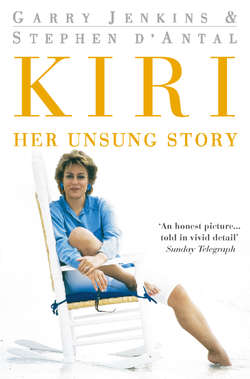Читать книгу Kiri: Her Unsung Story - Garry Jenkins - Страница 6
ОглавлениеShortly before noon on Wednesday, 29 July 1981, the anxiety that had been etched on the features of Charles, Prince of Wales for most of an eventful morning finally gave way to a faraway smile.
The heir to the throne of the United Kingdom was in the midst of the most solemn moment of his thirty-two-year-old life. Dressed in the full uniform of a Commander of Her Majesty’s Royal Navy he was positioned behind a large desk in the Dean’s Aisle in London’s St Paul’s Cathedral. He had, in the presence of his mother, Queen Elizabeth II, just signed the wedding certificate confirming the vows he had taken moments earlier in the main hall of Sir Christopher Wren’s imperious basilica. Sitting next to him, cocooned in a sea of ivory silk, was his new wife, the twenty-year-old Lady Diana Spencer, now the Princess of Wales.
For both Charles and Diana, the intimacy and privacy of the moment had helped lift the tensions of the previous few hours. The atmosphere inside the chapel, where they were congratulated by their families and the man who had just officiated over the wedding, the Archbishop of Canterbury, Dr Robert Runcie, was one of joyous relief.
For all the happiness Charles was sharing with his radiant bride at that moment, however, it was another woman who was responsible for his most spontaneous smile. Some fifty metres away, back in the north transept and out of his view, her familiar voice had begun delivering the opening stanzas of one of his favourite arias, ‘Let the Bright Seraphim’ from Handel’s Samson. Suddenly, Charles admitted later, he found himself strangely disconnected from the tumultuous events unfolding around him. Instead, he said, his head was filled with nothing but the blissful sound of ‘this marvellous, disembodied voice’.
If the divine soprano of Kiri Te Kanawa was instantly recognisable to the man at the centre of the most eagerly awaited Royal Wedding in living memory, it was less so to the vast majority of the 700 million or so people watching the spectacle on television around the world. At first the unannounced sight of her striking, statuesque form, dressed in a rainbow-hued outfit, a tiny, pillbox hat fixed loosely on her lustrous, russet red hair, had been something of a puzzle. Yet the moment her gorgeous operatic phrases began climbing towards the domed ceiling of St Paul’s her right to a place in the proceedings was unmistakable.
Charles had wanted the occasion to be a festival as well as a fairytale wedding, in his own words, ‘as much a musical event as an emotional one’. His bride had entered St Paul’s to a rousing version of Purcell’s Trumpet Voluntary. Sir David Willcocks, Director of the Royal College of Music, had conducted an inspired version of the National Anthem. A glorious version of Elgar’s Pomp and Circumstance March no. 4 had been prepared to lead the newlyweds down the aisle. Yet it was the occasion’s lone soloist who was providing its unquestioned highlight.
Since she emerged, a decade earlier, as a musical star of the greatest magnitude with her performance as the Countess in Mozart’s The Marriage of Figaro at Covent Garden’s Royal Opera House, Kiri Te Kanawa had grown accustomed to glamorous occasions on the world’s great stages, from the New York Met to La Scala. The faces she saw assembled before her today, however, made up the most glittering audience she or indeed any other singer had ever encountered. Seated on row after row of gilted, Queen Anne chairs were not just the vast majority of the British Royal Family but Presidents Reagan of America and Mitterrand of France, Prince Rainier and Princess Grace of Monaco, the monarchs of Belgium, the Netherlands and Denmark, ex-King Constantine of Greece and the giant figure of the King of Tonga. Behind them sat crowned heads, presidents and prime ministers representing almost every nation on earth.
The soprano’s emotions were, as usual, a mixture of fire and ice. Inside, she confessed later, she was a maelstrom of nerves. Yet her voice, unfaltering and flawless, betrayed none of her true feelings. It was as if she had been born for this moment and this place – as, indeed, many were sure she had been.
In the decade or so since her early stage triumphs, Kiri Te Kanawa had frequently been described as a member of aristocracy. Her father, people said, was descended from a great chief of the Maniapoto tribe, a member of the Maori nation of New Zealand. In truth, she did not know her true identity. She had no real idea whether she was a Maori princess or not. Among the hundreds of millions of people who watched her sing that day, only a tiny handful knew the truth. They sat 13,000 miles away, on the east coast of her homeland, their television sets tuned to the wedding being broadcast live at midnight Pacific time.
As the strains of Handel faded inside St Paul’s Cathedral and the television commentators paid tribute to the singer who had so charmed the assembled kings and queens, they shook their heads quietly and a little mournfully. They knew Kiri Te Kanawa’s true story was rather different from that which the world imagined. They knew, much like the wedding of Charles and Diana, it too was far from a fairytale.
